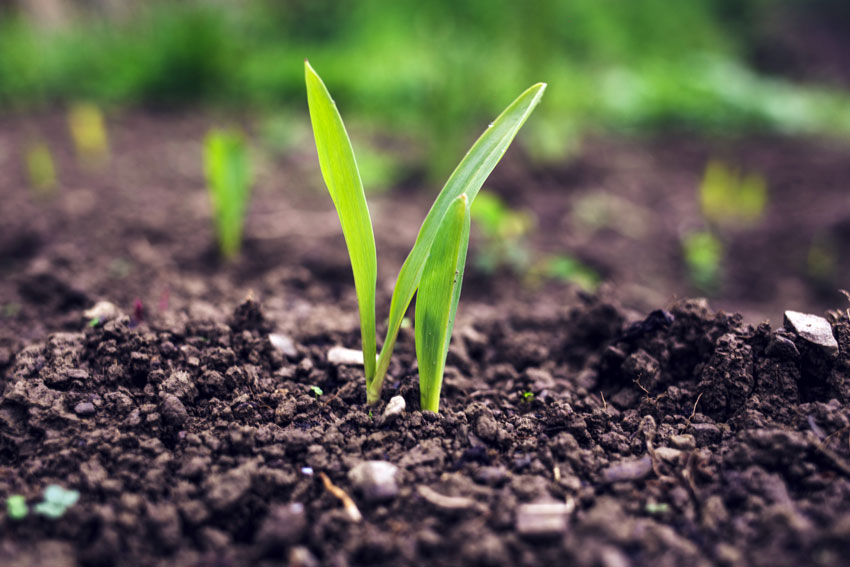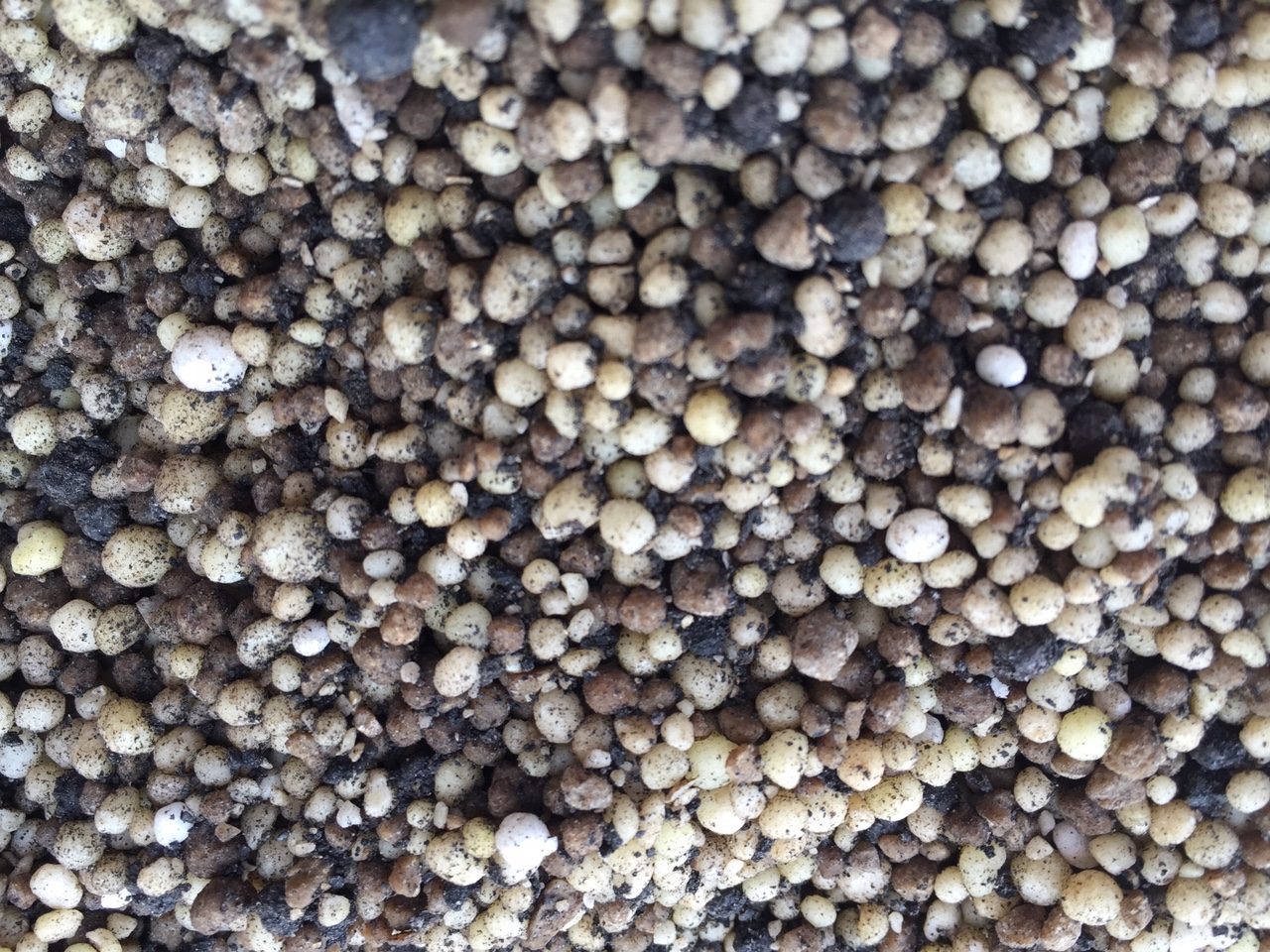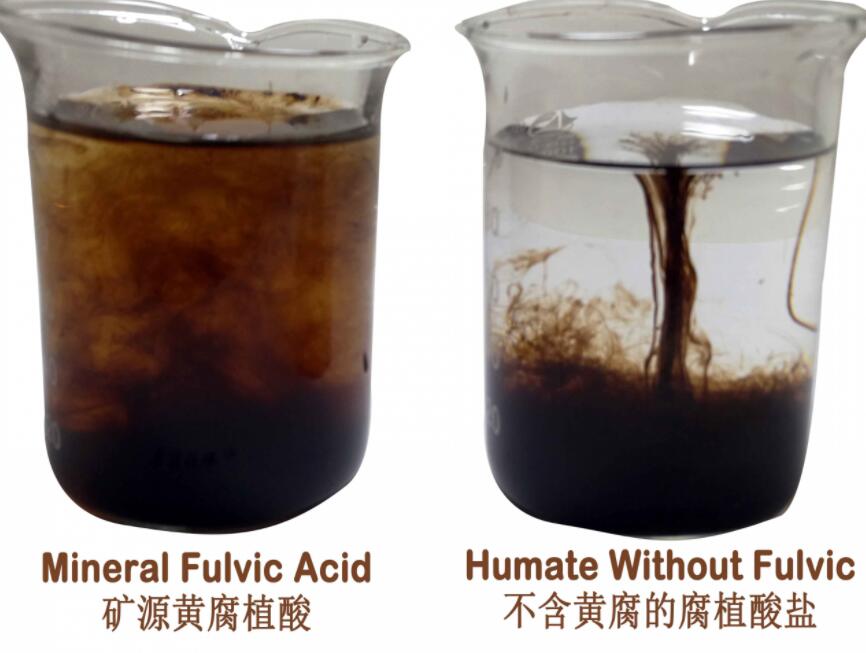
I see sodium humate (NaHA) as a powerful tool in modern agriculture. This natural compound comes from humic substances found in soil organic matter. I use sodium humate to improve plant health, boost soil fertility, and support animal nutrition. Recent research shows that NaHA enhances nutrient assimilation, increases plant resistance to disease, and reduces the need for synthetic fertilizers. These proven benefits make sodium humate valuable not only for crops but also for environmental management and animal feed.
- Sodium humate is a natural compound that improves soil health, plant growth, and animal nutrition.
- It enhances soil structure by making soil less compact and helps roots absorb water and nutrients better.
- Applying NaHA boosts crop yields by increasing nutrient uptake and strengthening plants against disease.
- NaHA helps clean polluted soils and water by binding harmful metals and pollutants.
- In animal feed, NaHA improves digestion, supports steady growth, and strengthens the immune system.
- It speeds up wound healing and reduces inflammation by protecting tissues and promoting repair.
- Using the right dosage and handling NaHA carefully ensures safety and maximizes benefits.
- Ongoing research and new product innovations promise even more effective and sustainable uses of NaHA.
Overview
What Is Sodium Humate
I define sodium humate as a water-soluble salt derived from humic acid, which comes from the decomposition of organic matter in soil. This compound belongs to the family of humic substances, which also includes fulvic acid and humin. I often see NaHA described as a complex mixture of organic molecules. These molecules contain aromatic, polyaromatic, aliphatic, and carbohydrate units. The structure includes carboxylic, phenolic, and ester groups, which give NaHA its unique chemical behavior. In my experience, NaHA acts as a dibasic acid because of its carboxyl and phenolate groups. This property allows it to interact with metal ions and form stable complexes.
NaHA plays a vital role in soil health and plant growth. I use it to improve soil structure, increase nutrient retention, and enhance the availability of essential minerals.
Properties
Sodium humate stands out because of its physical and chemical properties. I notice that it dissolves easily in water, which makes it convenient for agricultural and industrial applications. The color usually ranges from dark brown to black, and it has a granular or powdery texture. I value its high cation exchange capacity (CEC), which helps soils retain nutrients like potassium, magnesium, and calcium. This property supports plant growth and boosts soil fertility.
Here is a summary of NaHA’s key characteristics:
| Aspect | Description |
|---|---|
| Chemical Composition | Aromatic, polyaromatic, aliphatic, and carbohydrate units |
| Functional Groups | Carboxylic, phenolic, and ester groups |
| Functional Classification | Behaves as a dibasic acid due to carboxyl and phenolate groups |
| Metal Ion Interaction | Forms complexes and chelates with metal ions (e.g., Mg²⁺, Ca²⁺, Fe²⁺, Fe³⁺) |
| Molecular Weight | Varies by source and extraction method |
| Extraction Method | Alkaline extraction (commonly with NaOH) |
| Structural Nature | Supramolecular associations of small, heterogeneous molecules |
| Bioactivity and Role | Promotes plant growth, supports soil ecosystem functions |
I rely on these properties when I select sodium humate for soil conditioning, water treatment, or industrial processes.
Production
I produce sodium humate through an alkaline extraction process. I start with natural sources rich in humic substances, such as leonardite, peat, or lignite. I treat these materials with a sodium hydroxide (NaOH) solution. This reaction converts humic acid into its sodium salt form, which increases solubility and bioavailability. After extraction, I filter and dry the product to obtain a fine powder or granules. This method preserves the functional groups that make NaHA effective in various applications.
I see NaHA used in many sectors:
- Agriculture: Soil conditioner, nutrient enhancer, and plant growth stimulant.
- Environmental management: Soil remediation and water treatment.
- Industry: Dispersant in mineral processing, additive in ceramics, and flocculant in wastewater treatment.
I choose sodium humate for its versatility, efficiency, and positive impact on soil and plant health.
Sodium Humate Application
Agriculture
Soil Structure
I rely on sodium humate to improve soil structure in my fields. When I apply it, I notice that the soil becomes more crumbly and less compacted. This change allows roots to penetrate deeper and access water more efficiently. The high cation exchange capacity of NaHA helps soils retain essential nutrients like potassium and calcium. I see healthier root systems and better water retention, which are both critical for strong plant growth. Improved soil structure also supports beneficial microorganisms, which play a key role in maintaining soil health.
Nutrient Absorption
Sodium humate enhances nutrient absorption in crops. I observe that plants absorb nitrogen, phosphorus, and other minerals more effectively after application. This compound interacts with plant roots and increases their ability to take up nutrients from the soil. I have seen studies showing that NaHA improves soil nitrogen content and root activity. It also reduces nitrogen loss when combined with urea, making fertilizer use more efficient. These benefits lead to stronger, greener plants and contribute to overall soil health.
Crop Yield
I use sodium humate to boost crop yield. In my experience, maize and other crops respond well to its application. The compound influences plant hormone crosstalk, which regulates growth and development. I have noticed increased resistance to disease and environmental stress. As a result, my harvests are more abundant and consistent. By supporting nutrient uptake and soil structure, NaHA application leads to higher productivity and sustainable farming practices.
Tip: For best results, I recommend applying NaHA at key growth stages to maximize its impact on crop yield.
Environmental Management
Soil Remediation
I turn to sodium humate when I need to remediate contaminated soils. Its unique chemical structure allows it to bind heavy metals and pollutants, preventing them from entering the food chain. I have used it to improve the chemical characteristics of humus during composting, which enhances soil quality. NaHA also interacts with microplastics, helping to mitigate the impact of environmental pollutants. These properties make it a valuable tool for restoring degraded land and protecting ecosystems.
Water Treatment
Sodium humate plays a significant role in water treatment. I add it to water systems to bind and remove harmful substances, such as heavy metals and organic pollutants. Its flocculant properties help clarify water by causing suspended particles to clump together and settle out. I have seen NaHA used in both agricultural runoff management and industrial wastewater treatment. This approach supports cleaner water and healthier environments.
Industry
Oil and Gas
In the oil and gas industry, I use sodium humate as an additive during drilling operations. It helps reduce fluid loss and stabilizes wellbore walls. By forming complexes with metal ions, NaHA prevents blockages and improves drilling efficiency. I find it especially useful in challenging drilling environments where maintaining wellbore integrity is critical.
Ceramics
Sodium humate serves as a dispersant and binder in ceramics manufacturing. I add it to clay mixtures to improve workability and prevent clumping. This results in smoother, more uniform ceramic products. The compound also enhances the strength and durability of finished ceramics, making it a preferred choice in the industry.
Wastewater
I apply sodium humate in wastewater treatment plants to remove contaminants and improve water quality. Its ability to bind heavy metals and organic pollutants makes it effective as a flocculant. I have seen it used to treat both municipal and industrial wastewater, supporting environmental sustainability and regulatory compliance.
Note: The versatility of NaHA application across agriculture, environmental management, and industry highlights its importance in promoting productivity and ecological balance.
Animal Feed
Sodium Humate Used in Animal Feed
I have seen sodium humate used in animal feed as a reliable additive for improving livestock health and productivity. When I select NaHA feed grade, I look for purity and consistency to ensure optimal results. This additive comes from natural humic substances and offers a safe, eco-friendly solution for modern animal husbandry. I choose NaHA used in animal feed because it binds toxins, enhances nutrient absorption, and supports the immune system. These benefits help me maintain healthier animals and reduce the need for synthetic additives.
Digestion
I notice significant improvements in digestion when I include sodium humate in animal feed. The compound interacts with the digestive tract, promoting a balanced gut environment. I observe that animals experience better nutrient uptake and less digestive upset. NaHA helps stabilize gut flora, which leads to more efficient breakdown of feed components. In my experience, animals show increased appetite and improved feed conversion rates. I value this effect because it translates to better growth and overall health.
Growth
I rely on sodium humate to support steady growth in my livestock. Animals that consume feed containing this additive often display enhanced weight gain and improved body condition. I have read scientific studies that reinforce my observations. For example, research on male Betta splendens fish showed that diets supplemented with humic acid, a component related to NaHA, led to increased activity, elevated testosterone levels, and upregulation of immune-related genes. These physiological and immunological improvements contribute to healthier, faster-growing animals. I see similar results in my own practice, where animals fed with sodium humate demonstrate robust development and resilience to stress.
Tip: Consistent use of sodium humate feed grade in animal feed can help maximize growth potential and support animal well-being throughout all life stages.
Disease Prevention
I have seen firsthand how sodium humate supports disease prevention in livestock. When I add sodium humate to animal feed, I notice a marked improvement in the overall health and resilience of my animals. This compound works by strengthening the immune system and providing antioxidant protection. Healthy animals resist infections more effectively and recover faster from stress.
A clinical study by Wang et al. (2021) demonstrated that supplementing weaned calves with sodium humate and glutamine significantly reduced the incidence of diarrhea. The researchers linked this benefit to positive changes in the intestinal microbiota and metabolites. I find this result especially important because gastrointestinal diseases can cause major losses in young animals. By supporting gut health, NaHA helps prevent these common problems.
I also value the immunostimulatory properties of humic substances. Sodium humate enhances immune responses, making animals less susceptible to infections. Its antioxidant effects protect cells from oxidative stress, which often contributes to disease. I have observed that animals receiving sodium humate in their diet show fewer signs of illness and maintain better condition during challenging periods.
Tip: Consistent inclusion of sodium humate in animal feed can help reduce disease outbreaks and lower the need for antibiotics, supporting a healthier and more sustainable livestock operation.
Health
Wound Healing
I have seen sodium humate play a significant role in wound healing, especially in both internal and external tissue repair. When I use sodium humate, I notice faster recovery in animals with skin injuries and gastrointestinal lesions. This compound supports cutaneous wound healing by enhancing the integrity of the skin and mucosal barriers. I rely on its ability to increase tight junction proteins and mucin content, which strengthens the protective layers of the body. In my experience, sodium humate also modulates the expression of tgf-β, a key transforming growth factor involved in tissue regeneration and repair.
Here is a summary of research findings that support the benefits of sodium humate in wound healing:
| Research Focus | Metrics Used | Findings Supporting Health Benefits |
|---|---|---|
| Intestinal Damage Repair | Histopathology (mucosa integrity) | Enhanced epithelial integrity and mucosal repair |
| Cutaneous Wound Healing | Clinical and histological assessment | Improved healing rates and tissue regeneration |
| Gastric Ulcer Protection | Proinflammatory cytokine levels | Reduced cytokines, aiding wound healing |
| Intestinal Barrier Function | Tight junction protein and mucin expression | Increased expression, supporting wound healing |
I have observed that sodium humate reduces inflammation at the wound site, which creates a better environment for healing. By supporting the upregulation of tgf-β, sodium humate accelerates the wound healing process and helps restore normal tissue structure. I recommend its use for both cutaneous wound healing and internal injuries because of these proven effects.
Detoxification
I use sodium humate to promote detoxification in both animals and the environment. This compound binds toxins, heavy metals, and harmful substances, preventing their absorption and supporting their elimination from the body. I have seen sodium humate protect the intestinal lining from damage caused by aflatoxin B1 and bacterial toxins. It restores villus height and reduces intestinal permeability, which are critical for effective detoxification and wound healing.
The following table highlights key research findings related to detoxification:
| Research Focus | Metrics Used | Findings Supporting Health Benefits |
|---|---|---|
| Protection Against Toxins | Intestinal permeability, villus height | Restored villus height and reduced permeability |
| Gut Microbiota Modulation | Microbiota profiling | Increased beneficial bacteria, aiding detoxification |
| Antioxidant Capacity | Biochemical assays | Enhanced antioxidant function, supporting detoxification |
I have noticed that sodium humate increases the populations of Bifidobacterium and Lactobacillus in the gut. These beneficial bacteria help maintain a healthy microbiome, which is essential for detoxification and wound healing. I also value the antioxidant properties of sodium humate, which protect cells from oxidative stress and further support the body’s natural detoxification processes.
Anti-inflammatory
Inflammation can slow down wound healing and cause discomfort. I trust sodium humate for its strong anti-inflammatory effects. This compound downregulates inflammatory pathways such as TLR4/NF-kB and NLRP3 signaling. I have seen reduced levels of proinflammatory cytokines in animals treated with sodium humate, which leads to faster tissue repair and less pain.
Here is a table summarizing the anti-inflammatory benefits:
| Research Focus | Metrics Used | Findings Supporting Health Benefits |
|---|---|---|
| Inflammatory Pathway Modulation | Downregulation of TLR4/NF-kB, NLRP3 | Reduced inflammatory signaling, aiding wound healing |
| Anti-inflammatory Effects | Proinflammatory cytokine reduction | Lower cytokine levels, supporting tissue repair |
| Immune Function | Antioxidant and immune assays | Enhanced immune status, promoting wound healing |
I have found that sodium humate not only reduces inflammation but also boosts immune function. The upregulation of tgf-β further supports anti-inflammatory action and tissue regeneration. I recommend sodium humate for anyone seeking to improve wound healing, detoxification, and overall health through natural means.
Note: Consistent use of sodium humate can help maintain a healthy balance between inflammation control, detoxification, and tissue repair, making it a valuable addition to animal and environmental health management.
Safety and Best Practices
Dosage
I always pay close attention to the correct dosage when I use sodium humate. The right amount depends on the specific application, whether I am treating soil, supplementing animal feed, or managing water quality. For soil improvement, I usually apply between 5 to 10 kilograms per hectare. In animal feed, I add sodium humate at a rate of 0.1% to 0.3% of the total feed weight. For water treatment, I adjust the dosage based on the level of contamination and the volume of water.
Tip: I recommend consulting with an agronomist or animal nutritionist before deciding on the dosage. This ensures the best results and avoids unnecessary waste.
Here is a quick reference table I use for typical sodium humate dosages:
| Application Area | Recommended Dosage |
|---|---|
| Soil Amendment | 5–10 kg per hectare |
| Animal Feed | 0.1–0.3% of total feed weight |
| Water Treatment | Varies (consult a specialist) |
I always start with the lowest effective dose and monitor the results. If I see positive changes, I maintain the dosage. If not, I adjust as needed.
Handling
I handle sodium humate with care to maintain its quality and ensure safety. I store it in a cool, dry place, away from direct sunlight and moisture. This prevents clumping and preserves its effectiveness. When I measure and mix sodium humate, I use gloves and a dust mask to avoid skin contact and inhalation of fine particles. I keep the product sealed tightly after each use.
Here are my best practices for safe handling:
- Wear gloves and a dust mask during mixing or application.
- Store sodium humate in a sealed container.
- Keep the product away from children and animals.
- Clean equipment thoroughly after use.
Note: I never mix sodium humate with strong acids or oxidizing agents. This helps prevent unwanted chemical reactions.
Environmental Impact
I choose sodium humate because it supports sustainable agriculture and environmental protection. This product comes from natural humic substances, so it fits well with eco-friendly farming practices. When I apply sodium humate, I see improved soil health and reduced reliance on synthetic chemicals. It binds heavy metals and pollutants, which helps prevent contamination of crops and water sources.
I also notice that sodium humate promotes the growth of beneficial soil microbes. This leads to healthier ecosystems and better crop yields. I always follow recommended dosages to avoid over-application, which helps protect the environment.
🌱 Sustainability Tip: I use sodium humate as part of an integrated management plan. This approach maximizes benefits for both productivity and environmental health.
By following these safety and best practice guidelines, I ensure that sodium humate delivers its full potential while protecting people, animals, and the environment.
Future Trends
Research
I see a surge in research on sodium humate across the globe. Scientists now explore its molecular structure and how it interacts with soil, plants, and animals. I follow studies that examine how sodium humate improves nutrient uptake and boosts plant immunity. Many universities and agricultural institutes test its effects on different crops and livestock. They use advanced tools like spectroscopy and gene expression analysis to understand its mechanisms.
Note: I often read about new findings in journals such as Agriculture, Environmental Science, and Animal Nutrition. These studies help me stay updated on best practices.
Researchers also investigate sodium humate’s potential in environmental cleanup. I notice more projects that focus on its ability to bind heavy metals and organic pollutants. This research supports safer food production and cleaner water sources. I expect more breakthroughs as technology advances and more funding becomes available.
Innovation
I see innovation driving the next generation of sodium humate products. Manufacturers now develop specialized formulations for targeted applications. For example, I use granulated sodium humate for easy soil application and liquid concentrates for foliar sprays. Some companies add micronutrients or beneficial microbes to create multi-functional products.
Here are some recent innovations I have observed:
- Controlled-release formulations: These products deliver sodium humate steadily over time, reducing the need for frequent applications.
- Nano-technology integration: I see research on nano-sized sodium humate particles that improve absorption and effectiveness.
- Custom blends: Manufacturers tailor sodium humate blends for specific crops, soil types, or livestock needs.
🚀 Tip: I recommend staying informed about new product launches and consulting with suppliers to find the best fit for your operation.
I believe these innovations will make sodium humate even more effective and user-friendly in the future.
Sustainability
Sustainability remains at the heart of my approach to agriculture and environmental management. I choose sodium humate because it supports eco-friendly practices and reduces reliance on synthetic chemicals. Its natural origin and ability to enhance soil health align with my commitment to sustainable farming.
I use sodium humate to:
- Improve soil fertility and structure
- Reduce fertilizer and pesticide use
- Support healthy microbial communities
- Remediate contaminated soils and water
| Sustainability Benefit | How Sodium Humate Helps |
|---|---|
| Soil Health | Boosts organic matter and structure |
| Water Quality | Binds pollutants and heavy metals |
| Crop Productivity | Increases yield with fewer inputs |
| Biodiversity | Supports beneficial soil organisms |
🌱 Sustainability Insight: I see sodium humate as a key tool for meeting future food demands while protecting the environment.
I expect ongoing research, product innovation, and sustainable practices to expand the role of sodium humate in agriculture and beyond. I remain committed to learning and adapting as new trends emerge.
I see sodium humate as a cornerstone in sustainable agriculture, animal health, and environmental protection. This product improves soil, boosts crop yields, and supports livestock well-being. I always consult professionals to ensure proper application and maximize results. The versatility of sodium humate inspires me to keep learning. Ongoing research and new innovations promise even greater benefits for the future.
🌱 I believe sodium humate will continue to shape a healthier, more productive world.
FAQ
What is the best way to apply sodium humate in my field?
I usually dissolve sodium humate in water and apply it as a soil drench or foliar spray. I follow the recommended dosage for my crop and soil type. This method ensures even distribution and maximum effectiveness.
Can I mix sodium humate with other fertilizers?
Yes, I often blend sodium humate with common fertilizers. I check compatibility first and avoid mixing with strong acids. This combination improves nutrient uptake and soil health.
Is sodium humate safe for animals?
I use sodium humate in animal feed because it is safe and natural. I always follow the recommended dosage to support animal health and avoid overuse.
How does sodium humate help with soil remediation?
Sodium humate binds heavy metals and pollutants in the soil. I use it to prevent these contaminants from entering plants. This process improves soil quality and supports environmental restoration.
Can I use sodium humate in organic farming?
Yes, I choose sodium humate for organic farming. It comes from natural sources and fits well with organic standards. I always check with my certifying agency before use.
How should I store sodium humate?
I keep sodium humate in a cool, dry place, away from sunlight and moisture. I seal the container tightly after each use. This practice maintains product quality.
Does sodium humate have an expiration date?
Sodium humate remains stable for a long time if stored properly. I check the packaging for any manufacturer recommendations. I use older stock first to ensure freshness.
💡 Tip: I always consult with an expert before making changes to my application routine.





